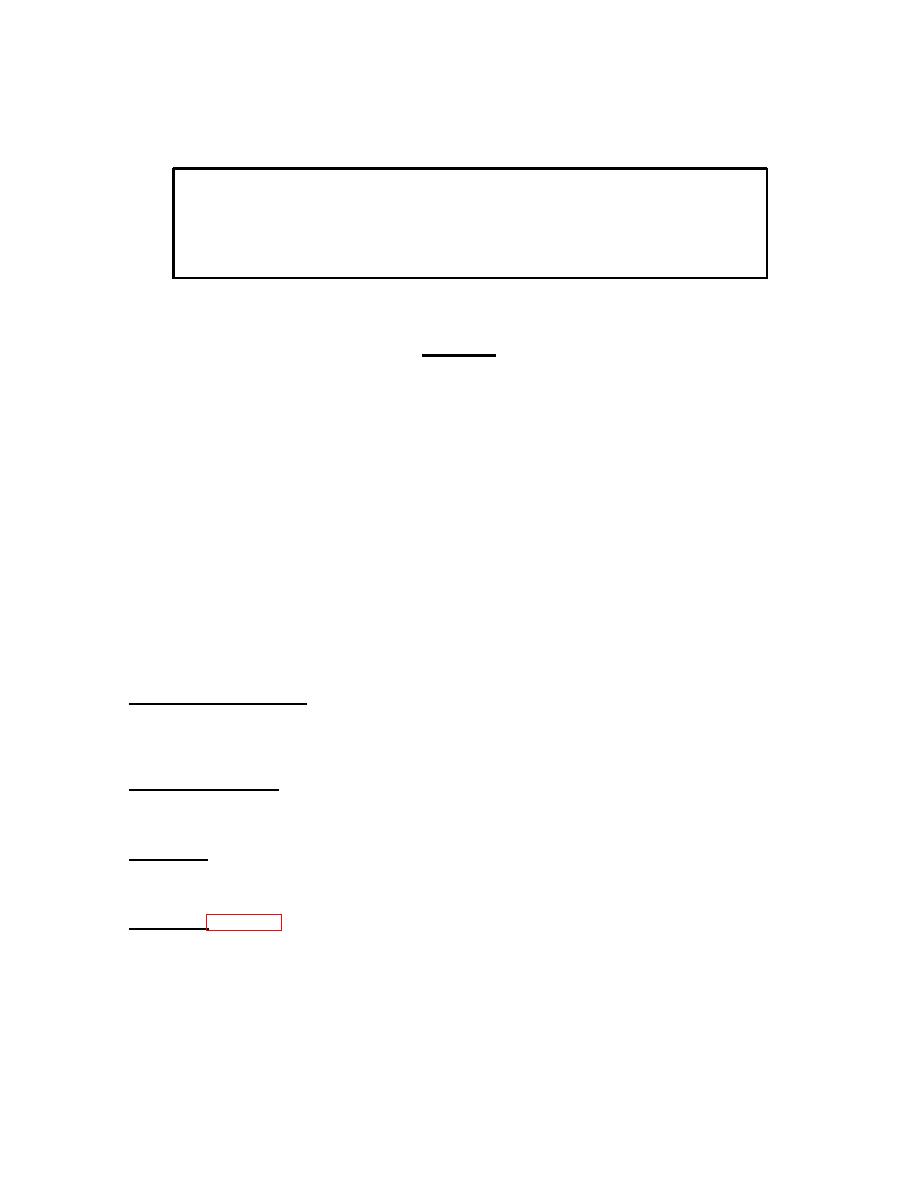
TM 9-6115-624-BD
APPENDIX D
SUBSTITUTE MATERIALS/PARTS
BDAR FIXES SHALL BE USED ONLY IN COMBAT OR FOR TRAINING
AT THE DISCRETION OF THE COMMANDER
(AUTHORIZED TRAINING FIXES ARE LISTED IN APPENDIX E)
IN EITHER CASE DAMAGES SHALL BE REPAIRED BY STANDARD
PROCEDURES AS SOON AS PRACTICABLE
Section I. INTRODUCTION
WARNING
Solvents, POL and other liquid chemicals may be hazardous to your health. Use only in well
ventilated areas. Keep all sources of fire away.
D-1. General. POL products available within the US and NATO military supply systems, commercial products and,
captured products may be acceptable substitutes for POL shortages, Some POL will be destructive if used. This
appendix provides tables on how to blend or mix good fuels with poor or non-fuels to increase the available quantity of
fuel. This appendix also presents information on lubricants and hydraulic fluids. The tables divide POL products into
three categories as follows:
Primary. The correct product for the system.
Alternate. A product that closely matches the primary but will result in reduced performance. Using the alternate
POL will have no effect on the durability of the system. There are no restrictions on the duration of use.
Emergency or Expedient. A product that can be used for a short period of time only. These products are a last
resort only and will result in a both significant reduction in performance and in serious harm to the system with continued
use.
a.
POL Product Identification. POL products are usually identified by NSNs or part numbers which identify the
product, however, specification numbers and product names may also be a means of identifying the product. Guidance
provided is keyed to specification numbers, product names, application (automotive, aviation, marine), and the type of
user (military, commercial and foreign).
b.
NATO POL Products. NATO products can usually be assumed to be direct replacements for US Military
products, but there are some products which do not meet the same user applications. The American Society of Testing
and Measurements (ASTM) specifications relate to commercial products found in the US.
c.
Fuel Usage. This section will list a few elementary characteristics of importance, although you will have no
means of measuring or predicting them. You can use the basic fuels, as provided, in order or priority. It will tell you how
to mix one or more fluids to produce a usable fuel and finally tell how to remove or flush a fuel from the system.
d.
Fuel Mixing. Table D-1 identifies fuels or products that can be used as fuels. One of the best means to
increase the available fuel is to use potential substitutes as extenders by mixing them with the primary fuels and not
using them as the sole fuel source. This allows some products which could not ordinarily be burned (or pumped) to be
used by diluting them. Because of the dangers of varying combustability
D-1

